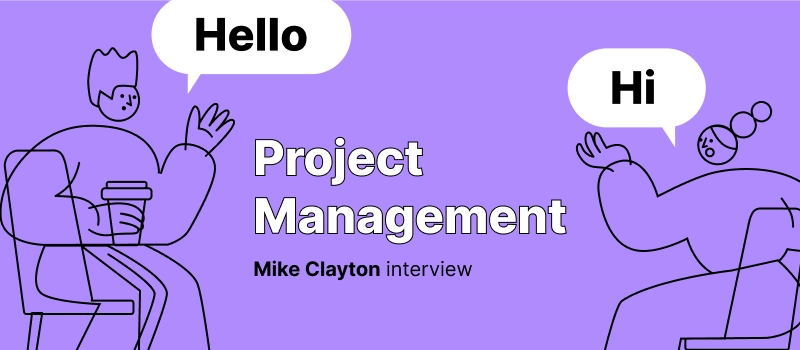
A project milestone marks significant progress in a project. That being said, they do not necessarily need to represent a monumental achievement. They can represent a beginning, middle, and end, as long as they relate to the project’s main objective.
Milestones allow groups to recognize their hard work. Most industries celebrate milestones; among the most common to implement them are teams in engineering, technology, finance, law and healthcare. Usually, milestones do not have a specific duration themselves, and they are more likely to have dependencies, meaning they are contingent on certain tasks being completed. Read on to learn common project milestones examples that you can use in your own projects.

Common Project Milestones Examples
Usually, milestones are recognized at the end of every phase of a project, such as at the end of each project management phase. Projects can be broken down into several phases, each phase representing a significant fraction of completed tasks that might hold more meaning to one team over another.
For example, the design stage’s completion is more of a significant accomplishment to the design team than the sales team that will not be involved until well past the development stage. Still, phases can be meaningful to team members and stakeholders alike as they mark significant moments for the business and bring them closer to the final objective. There could be several smaller milestones within each phase, such as the project milestones examples below.
Early stages
- Funding: Before all else, a team starting a project has to make sure there is enough funding available to carry out the necessary tasks. This is crucial to make sure all team members are compensated for their work. Ideally, the project will secure enough funding to provide for unexpected changes that incur costs.
- Planning: The project plan compiles all the details, from the objectives to the schedules. While a project plan undergoes regular adjustments throughout the project, it is still crucial to implement one from the start, so team members have a clear understanding of how to reach their final objectives.
- Training: The training stage involves activities to better prepare team members for the project, such as knowledge transfer to an operations team. Training can be conducted by in-house teams or can also be outsourced in cases where specialized knowledge is required.
- Design: Before a design for a product or service can be approved, the team will know the expected time for completion that was decided on in the planning stage. This stage essentially answers the “how” of the project. Depending on the project’s nature, it might include sketches, web designs, or prototypes. A project milestone regarding design can either be for the design’s review or completion.
Mid-project and miscellaneous milestones
- Resources: This stage entails gathering and distributing necessary resources. Resources can include anything required in order to carry out all the activities named in the planning stage of the project. Specifically, they might involve people, products, or services, such as the deployment of a development team.
- Environment: Finalizing a working environment designed to support the team in their objectives is a significant milestone. This stage might look like building spaces such as a lab, system, or even an application. Ideally, an environment will be set up in the earlier stages; however, the project will often begin before the environment is fully completed.
- Integration: A milestone celebrating integration might be measured when products are integrated into a system and working alongside other technologies. Additionally, integration might represent the coming together of two teams.
- Communication: While communication continues throughout an entire project, a project milestone can recognize a substantial completion of an event involving the communications team, such as the planning and executing a project kickoff meeting.
- Processes: A process milestone might mark the commencement or completion of the process. For example, if the project involves new software, it might represent the beginning of the testing stage.
Final stages
- Deliverables: Milestones often represent the delivery of work to clients. Deliverables are tangible or intangible productions prepared for external distribution, which marks a significant team achievement. Deliverables tend to have commercial implications, such as triggering payment to a vendor.
- Objectives and Goals: Achieving a goal can be recognized as a milestone as it demonstrates that the team is successfully meeting future desired results that were envisioned in the project’s plan. However, not all goals will be labeled as milestones. Goals help define where a team is going, but the milestones are used as reference points to prove that the project is moving closer towards completion.
- Testing: Once a product or service is sufficiently developed, the team will enter the testing phase. While it certainly does not represent the completion of a project, it means that the product is prepared to undergo manual testing to see if it works in a controlled environment.
- Maintenance: After the product has been released for testing, new issues might arise that the team needs to address. The group remains responsible for troubleshooting and providing solutions to the problems and updating the product based on testing feedback.
The above list is by no means exhaustive for project milestones. A team manager selects the correct number of milestones based on the project’s size and predicted duration. Having milestones is important for carrying out a project since it makes things more exciting for the team. As milestones hold significant importance to a group, they can motivate teammates to get their work done. It’s best to avoid making milestones too frequent, as this will diminish their value. For example, if milestones are achieved by the team every day, the team will no longer regard them as meaningful.
Software for Keeping Tracking of Project Milestones
Are you and your team working towards a milestone? The journey can be made a lot easier by implementing the correct project management software. Managers and team members use actiTIME to track their time for a visual representation and analysis of their time management. Using actiTIME, your team can detect unproductive practices and modify them accordingly. Learning to manage your time with actiTIME can help any group reach its milestones.

















































